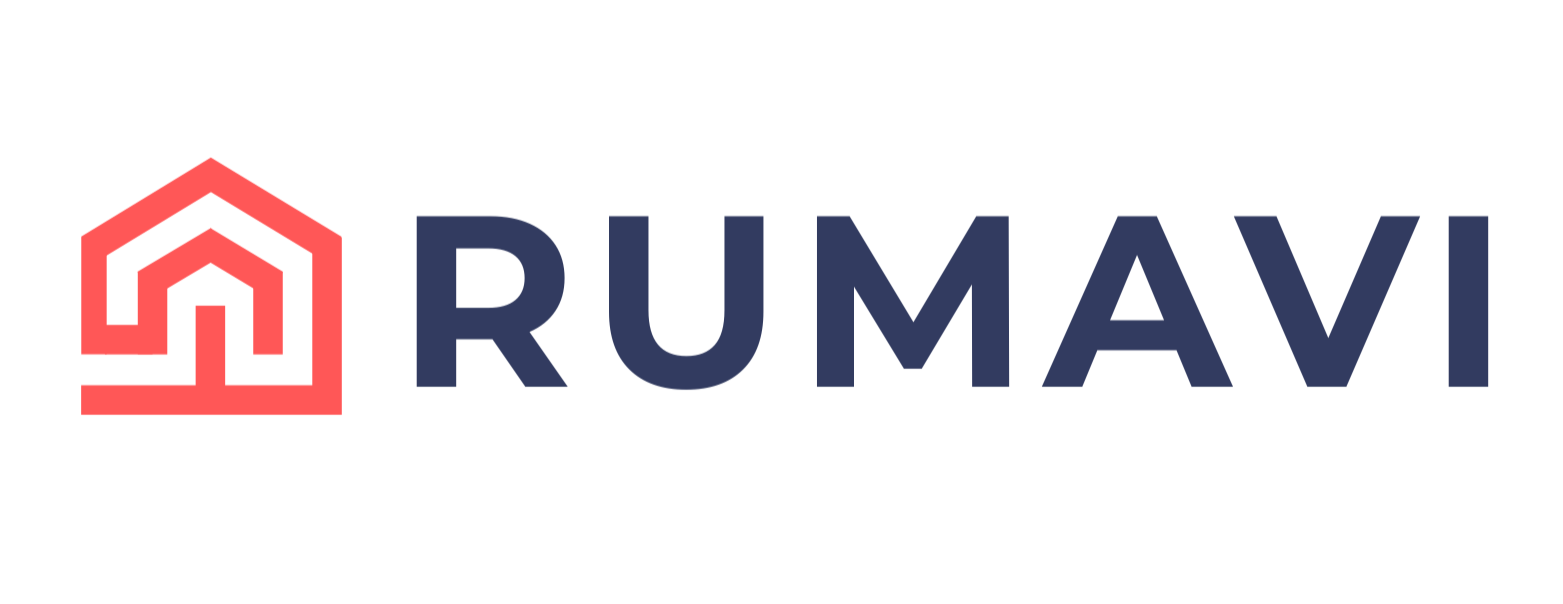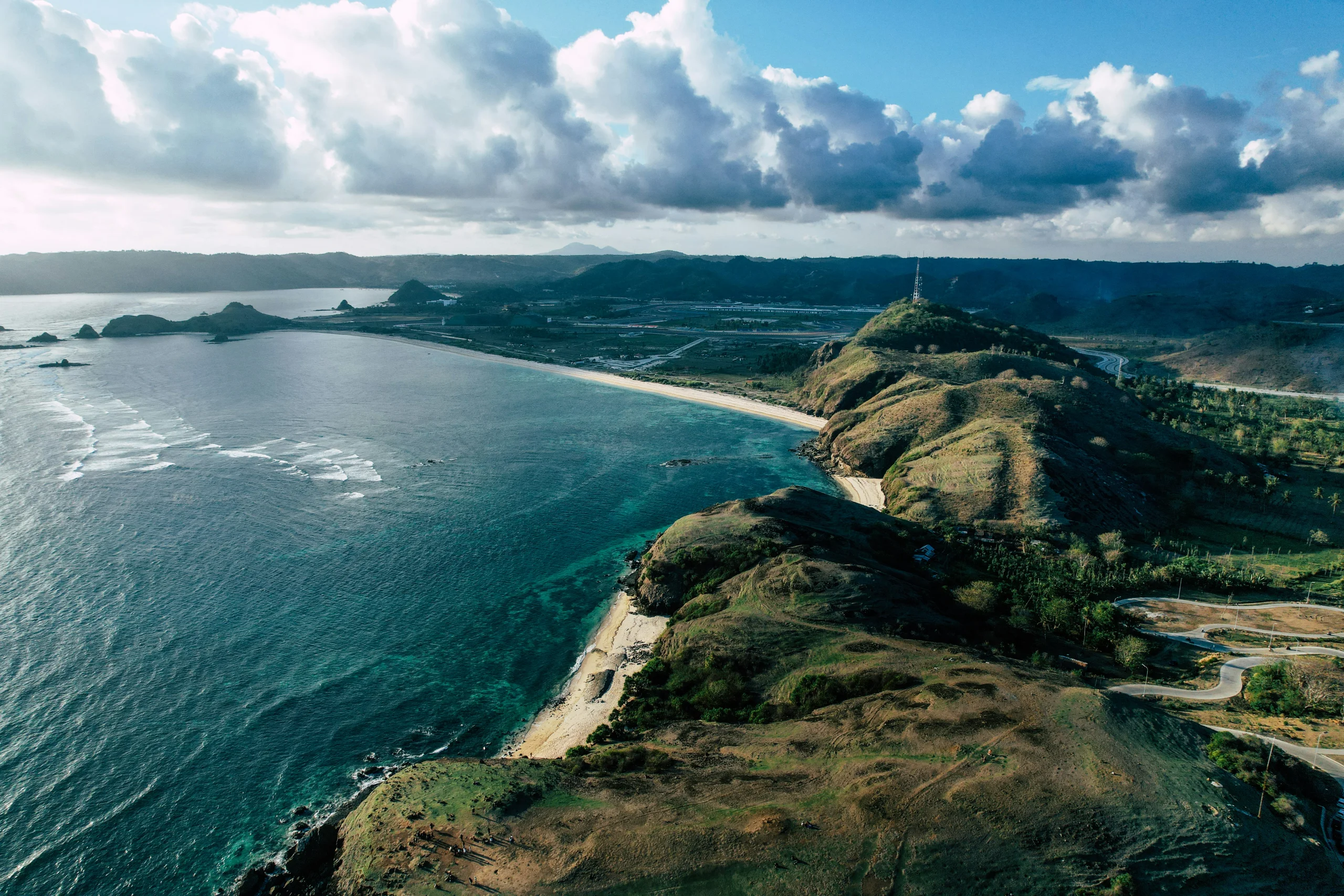If you've been watching Indonesia's property market, you've likely heard the whispers: Lombok is transforming from Bali's quieter neighbor into a serious investment destination in its own right. For international investors and lifestyle buyers exploring ASEAN real estate opportunities, 2025 might be the watershed year when Lombok steps into the spotlight—not by copying Bali, but by charting its own strategic path.
Between government-backed infrastructure upgrades, the high-profile Mandalika Special Economic Zone, and surging tourism catalyzed by global events like MotoGP, Lombok is offering compelling opportunities that deserve your attention. Land prices remain 40–60% below comparable Bali coastal zones, yet the fundamentals—connectivity, policy support, and market momentum—are rapidly strengthening.
This isn't hype. This is a data-driven look at what's actually happening on the ground in Lombok's property market. We'll unpack the facts, the momentum, the risks, and the real numbers so you can make an informed decision about whether Lombok property investment deserves a place in your portfolio.
Why Lombok's Profile Is Rising in 2025
Indonesia's tourism sector has rebounded strongly post-pandemic, and Lombok is capturing an increasing share of travelers looking beyond Bali's crowds. The Indonesian government projected between 14.6 and 16 million international arrivals nationally in 2025, up from 13.9 million in 2024. Lombok, historically overshadowed by its famous neighbor, is now drawing direct flights from Australia, Singapore, and Malaysia thanks to expanded air routes and aggressive destination marketing.
Market Supply and Hospitality Performance
On the supply side, Lombok's hospitality infrastructure is maturing rapidly. According to the Lombok Hotel & Branded Residences Report 2025, the island now hosts 1,326 hospitality-managed units across 18 branded developments, plus approximately 800 independent villas. Occupancy rates for luxury properties averaged around 56% in 2024, with rates climbing as connectivity improves and the island's global profile strengthens through major sporting events.
For context, Bali's hospitality-managed residence market spans 3,643 units across 59 projects—far deeper than Lombok's current supply. This gap helps explain both Lombok's lower entry costs and its significant catch-up potential for early investors.
The Pricing Advantage
Here's where Lombok property investment becomes particularly interesting: prime coastal land in South Lombok is consistently 40–60% cheaper than comparable zones in Bali. Current 2025 pricing shows:
- Kuta Lombok: US$150–350 per m²
- Tanjung Aan: US$150–300+ per m²
- Selong Belanak: US$60–200 per m²
- Are Guling: US$80–200 per m²
- Gerupuk: US$70–150 per m²
- Inland tracts: US$20–70 per m²
For investors, this pricing differential widens the margin for yield. For lifestyle buyers seeking villa ownership in tropical Indonesia, it means significantly more property for your investment. Add in Special Economic Zone incentives that ease foreign participation, and the value proposition becomes clear.
Mandalika SEZ: the flagship engine
Understanding the Mandalika Special Economic Zone
The Mandalika Special Economic Zone represents Indonesia's most ambitious tourism development outside of Bali. Covering 1,175 hectares of pristine South Lombok coastline, Mandalika was formally designated in 2017 as a tourism SEZ under Presidential Regulation No. 52/2014. Unlike Bali's organic (and often chaotic) expansion, Mandalika follows a masterplan approach with proper zoning, integrated utilities, and coordinated infrastructure.
Managed by ITDC (InJourney Tourism Development Corporation), the same state enterprise behind Bali's successful Nusa Dua development, Mandalika is designed as a sports and entertainment hub featuring world-class resorts, beach clubs, branded residences, and the Mandalika International Street Circuit, which has hosted MotoGP since 2022.
Investment Incentives and Entry Structures
Foreign investors in Lombok, particularly within Mandalika SEZ, benefit from substantial incentives including tax holidays, VAT exemptions, and streamlined permitting processes. Large capital commitments can qualify for extended corporate tax relief, while smaller investors still enjoy duty advantages and faster approvals.
For foreign property buyers, the typical structure involves establishing a PT PMA (foreign investment company) to secure building rights and operate within Indonesia's legal framework. While direct foreign freehold ownership remains restricted, properly structured leasehold arrangements or PT PMA vehicles provide secure, long-term access to Lombok real estate opportunities.
Performance and Scale
Billions of dollars have been committed to Mandalika's development pipeline. Current hospitality performance metrics are encouraging: luxury hotels within the zone maintain approximately 56% occupancy with average daily rates trending upward as new international flight routes launch. Industry analysts anticipate further growth as MotoGP continues to generate global media exposure and brand awareness for the destination.
Risk Considerations
No investment is without challenges. Infrastructure completion timelines can shift, and environmental pressures—particularly around coastal reef protection and waste management—require careful attention. Rigorous due diligence on land titles, clear leasehold renewal clauses, and proper legal structuring through experienced local counsel are non-negotiable for any Lombok property investment.
Infrastructure: The Backbone of Lombok's Investment Case
Infrastructure development is the foundation of any emerging property market. Lombok has made significant strides in the past three years, fundamentally changing the island's accessibility and investment viability.
Lombok International Airport Expansion
Lombok International Airport underwent major upgrades including runway extension to 3,300 meters and terminal enlargement to 43,500 m², boosting annual capacity to 7 million passengers. This positions Lombok as a secondary gateway to Eastern Indonesia, aligned with the national government's connectivity strategy. Earlier planning documents indicated PPP-driven investments approaching US$700 million for airport infrastructure.
Increased airlift capacity directly impacts property values. More flights mean more tourists, which drives accommodation demand, which in turn increases rental yields for villa and hotel investors.
Road Connectivity: The Airport-Mandalika Bypass
The 17-kilometer airport-to-Mandalika bypass, a 50-meter-wide expressway, has reduced transfer times from the airport to Kuta to just 20 minutes. This road effectively shrinks South and Central Lombok, bringing previously remote beaches like Selong Belanak, Gerupuk, and Mawun into easy reach for investors and tourists alike.
Completed in 2022 ahead of MotoGP events, this bypass represents the kind of strategic infrastructure investment that transforms regional property markets.
Port Development: Gili Mas Maritime Gateway
The Gili Mas port redevelopment near Lembar positions West Lombok as a cruise and yacht destination. Pelindo's masterplan includes cruise-class berths, marina facilities, seaside promenades, and waterfront hotels. Once operational, this port will unlock Sekotong's west coast for higher-end tourism and open new investment opportunities in currently undervalued coastal zones.
Investment Hotspots Beyond Mandalika
While Mandalika captures headlines, smart investors are also looking at emerging zones where infrastructure improvements and tourism growth are creating opportunities ahead of mainstream attention.
Sekotong (West Lombok)
Sekotong remains one of Lombok's most undervalued investment frontiers. The Buwun Mas Tourism Area is being developed with over 40 stakeholders, focusing explicitly on eco-luxury positioning and environmental sustainability. Recent coastal research emphasizes reef preservation and responsible development practices—lessons learned from Bali's environmental challenges.
Investment Case Study: A 3-hectare site in Sekotong could support a boutique eco-lodge with 12 keys plus 8 private villas. With average daily rates between US$140–260 and occupancy rates of 50–60%, long-term internal rates of return (IRR) in the 12–16% range are achievable, particularly once Gili Mas port becomes fully operational and brings cruise tourism to West Lombok.
Central & South Lombok: Kuta and Selong Belanak
Kuta is evolving from a sleepy surf town into a hybrid lifestyle hub, now anchored by proximity to Mandalika. Just 15 minutes away, Selong Belanak is attracting higher-end villa developments like Tampah Hills and Selong Selo, both modeled after Bali's successful luxury villa communities.
For Lombok property investment in this zone, target average daily rates of US$220–320 with net yields in the 7–10% range for well-positioned, professionally managed villas. Serviced hillside plots in Selong Belanak have been marketed from approximately US$82,000 for 1,100 m², anchoring current valuation bands.
The Gili Islands
The three Gili Islands—Trawangan, Air, and Meno—remain Lombok's tourism jewel. Gili Trawangan is the most developed, while Air and Meno cater to wellness retreats and quieter luxury experiences. Land scarcity creates price premiums, but investors must carefully navigate utility limitations and leasehold complexities.
A 2025 snapshot for Gili Meno indicates average daily rates around US$70 with approximately 32% occupancy, underscoring the need to calibrate investment underwriting by specific submarket, property type, and seasonal patterns rather than using island-wide averages.
Event-Driven Demand: MotoGP and Beyond
Major sporting and entertainment events create concentrated demand spikes that benefit nearby property investments through higher occupancy rates and premium pricing during event weeks.
Mandalika's MotoGP event attracted 102,000 spectators in 2023, growing to approximately 120,000 in 2024. Beyond direct attendance, the event generates significant global media exposure, positioning Mandalika and Lombok in front of motorsport's affluent international audience.
For property investors, this translates to compressed rental demand during race weeks, elevated yields during peak periods, and increased year-round awareness that drives baseline occupancy improvement. As additional sporting fixtures and entertainment events are added to the Mandalika International Street Circuit calendar over the next 3–5 years, event-driven demand should provide reliable annual peaks and shoulder-season lift for properties in Kuta, Mandalika, Selong Belanak, Gerupuk, and even Sekotong.
Investment Strategy Framework for Lombok Property
Successful Lombok property investment requires clear strategy, realistic financial modeling, and proper legal structuring. Here are proven approaches based on current market data.
ROI Model: Selong Belanak Villa Investment
Property Profile: 3-bedroom villa, US$500,000 total build-out cost
Target ADR: US$240 per night
Projected Occupancy: 55%
Yield Target: 8–12% annual return by year 3
This model assumes professional property management, strong digital marketing, and positioning within established villa communities like Selong Selo or Tampah Hills where infrastructure and amenities support premium pricing.
ROI Model: Sekotong Eco-Lodge Development
Capital Investment: US$3.5–5.5 million
Target ADR: US$140–260
Projected IRR: 12–16% as Buwun Mas and Gili Mas port mature
Timeline: 5–7 year investment horizon
This opportunity suits investors with higher risk tolerance and longer time horizons who can capture value as West Lombok's infrastructure and tourism base develop.
Legal Pathways for Foreign Investors
Foreign investors typically pursue two primary structures for Lombok property investment:
- PT PMA (Foreign Investment Company): Allows building rights (HGB) with proper capitalization and business licensing
- Long-term Leasehold: 25–30 year initial terms with clear renewal clauses, lower capital requirements but requires strong legal documentation
Both structures require experienced Indonesian legal counsel, comprehensive due diligence on land titles, and clear understanding of foreign ownership regulations.
Sustainability Integration
Indonesia's national tourism strategy increasingly emphasizes sustainable development, particularly within the five "super-priority" destinations including Mandalika. Properties incorporating reef-safe operations, rainwater harvesting, solar energy systems, and community integration programs are finding:
- Smoother permitting processes
- Higher guest review scores
- Longer average stays
- Better exit valuations and multiples
Sustainability is shifting from "nice-to-have" to performance differentiator in emerging ASEAN property markets.
Location Selection Framework
Match your investment strategy to the right location:
- Mandalika: Best for short-term growth, event-driven demand, branded residence opportunities
- Selong Belanak: Ideal for luxury villa communities targeting high-net-worth lifestyle buyers
- Sekotong: For eco-luxury pioneers with longer time horizons and sustainability focus
- Gili Islands: Scarcity-driven plays for investors who can navigate utility and leasehold complexities
Future Outlook: Lombok Property Market 2025–2030
Government Policy Support
Indonesia's tourism policy continues favoring geographic dispersion beyond Bali through the "super-priority destinations" program, which includes Mandalika alongside Lake Toba, Borobudur, Labuan Bajo, and Likupang. Government communications consistently reinforce that these five destinations will receive concentrated infrastructure investment, marketing budgets, and tourism training programs through the medium term.
For Lombok property investors, this signals predictable policy continuity and sustained government support for the fundamentals that drive property values: connectivity, utilities, tourism promotion, and quality standards.
Connectivity and Access Expansion
Lombok's 7-million-passenger airport capacity and 3,300-meter runway position the island to capture continued airlift growth. The incremental opening of cruise and yacht traffic as Gili Mas port matures will bring a different tourism demographic—typically older, higher-spending travelers who extend stays and seek property purchase opportunities.
Hospitality sector forecasts for Indonesia signal measured but positive growth trajectories. Industry briefs note that hotel supply in Mandalika still lags behind other super-priority destinations relative to demand projections, leaving room for Lombok to grow occupancy rates, average daily rates, and mixed-use product depth over the next 3–5 years.
Product Diversification Trends
Expect increasing product diversity beyond traditional independent villas. Industry updates indicate a pipeline shift toward hospitality-managed villas and branded residence formats as global operators test Lombok following their success in Bali. Off-plan, fixed-design villa packages in Kuta and Selong Belanak are already being marketed in the US$150,000–350,000 range, targeting a different investor profile than large custom developments.
As the market matures, amenity depth will increase—more quality restaurants, wellness facilities, international schools, healthcare services—all factors that support property values and rental performance.
Sustainability as Competitive Advantage
National positioning around sustainable tourism within Indonesia's priority destinations will increasingly reward developments that demonstrate environmental responsibility. Coastal management research specific to West Lombok emphasizes that development must align conservation goals with local economic livelihoods.
Properties that invest in on-site water treatment, solar-assisted power systems, reef protection measures, and meaningful community programs should benefit from smoother regulatory processes, stronger market positioning, and premium valuations at exit.
Is Lombok Really the Next Bali?
This is the question every investor considering Lombok property investment ultimately asks. The answer is nuanced.
Lombok shares Bali's natural beauty, cultural richness, and tourism momentum. But it is not—and should not try to be—a replica of Bali. What makes Lombok compelling for investors in 2025 is precisely what differentiates it: lower entry costs, better masterplanning, earlier-stage development with higher growth potential, and explicit focus on sustainability lessons learned from Bali's challenges.
For investors, Lombok offers higher potential returns accompanied by higher execution risk. Projects can face infrastructure delays. Environmental regulations are evolving. Market absorption may not meet optimistic projections.
For lifestyle buyers, Lombok delivers Bali-level beauty and tropical living without Bali's traffic, crowds, and inflated pricing—at least for now. Those who choose locations wisely and structure investments properly stand to benefit both financially and in quality of life.
Lombok in 2025 resembles what Bali was 15–20 years ago: a frontier destination with strong fundamentals, government backing, improving infrastructure, and early-stage momentum. The investors who entered Bali's villa market in the mid-2000s reaped substantial rewards. The question is whether Lombok's trajectory will follow a similar path—and whether you're positioned to capture that opportunity.
Frequently Asked Questions: Lombok Property Investment
Can foreigners buy property in Lombok?
Foreigners cannot directly own freehold land in Indonesia, but they can invest in Lombok property through two primary legal structures: establishing a PT PMA (foreign investment company) to obtain building rights (HGB), or securing long-term leasehold agreements (typically 25–30 years with renewal options). Both require proper legal structuring with experienced Indonesian counsel and comprehensive due diligence on land titles.
What are typical property investment returns in Lombok?
Well-located villas in prime zones like Selong Belanak and Kuta typically target 7–10% annual net yields when professionally managed. Boutique hospitality projects in emerging areas like Sekotong can achieve higher returns (12–16% IRR) but require longer investment horizons and greater operational expertise. Returns depend heavily on location, property quality, management, and market timing.
How do Lombok property prices compare to Bali?
Prime coastal land in South Lombok is currently 40–60% cheaper than comparable Balinese locations. Kuta Lombok averages US$150–350 per m² versus significantly higher Bali coastal pricing. Selong Belanak ranges from US$60–200 per m², while emerging zones like Gerupuk and Are Guling remain at US$70–200 per m². This pricing gap represents the core value proposition for early-stage Lombok property investment.
What is Mandalika SEZ and why does it matter for investors?
Mandalika Special Economic Zone is a 1,175-hectare masterplanned tourism development in South Lombok offering tax holidays, VAT exemptions, and streamlined permits for investors. Home to the Mandalika International Street Circuit (MotoGP host), luxury resorts, and branded residences, it represents Indonesia's most significant tourism infrastructure project outside Bali and serves as the anchor for Lombok's property market growth.
What are the best locations for property investment in Lombok?
Investment location depends on strategy: Mandalika offers short-term growth and event-driven demand; Selong Belanak suits luxury villa communities targeting high-net-worth buyers; Sekotong represents eco-luxury opportunities for longer-horizon investors; and the Gili Islands provide scarcity-driven plays despite infrastructure complexities. Each zone has distinct risk-return profiles requiring different capital levels and time horizons.
What infrastructure improvements are happening in Lombok?
Major infrastructure upgrades include: Lombok International Airport expansion to 7 million passenger capacity with a 3,300m runway; the 17km airport-to-Mandalika bypass reducing transfer times to 20 minutes; and the Gili Mas port redevelopment positioning West Lombok for cruise and yacht tourism. These projects fundamentally improve connectivity, accessibility, and investment viability across the island.
Is Lombok property investment risky?
Like any emerging market, Lombok carries higher risk than mature destinations. Potential challenges include infrastructure completion delays, evolving environmental regulations, market absorption uncertainty, and legal complexities for foreign investors. However, government policy support, improving fundamentals, and lower entry pricing create opportunities for investors who conduct thorough due diligence, use proper legal structures, and maintain realistic return expectations.
How does MotoGP impact Lombok property investment?
MotoGP events at Mandalika (120,000 spectators in 2024) create compressed rental demand spikes, premium pricing opportunities during race weeks, and significant global media exposure. For investors, this translates to elevated yields during peak periods and improved baseline awareness driving year-round occupancy growth. Additional sporting fixtures planned for the circuit will provide recurring annual demand catalysts.
Ready to Explore Lombok Property Investment?
The fundamentals are aligning in Lombok: government infrastructure investment, lower entry pricing than Bali, improving connectivity, and early-stage momentum backed by major events and tourism growth. But timing and execution matter enormously in emerging markets.
At Rumavi, we help international investors navigate ASEAN property markets with data-driven insights, local expertise, and end-to-end support. Whether you're evaluating Lombok villas, exploring Mandalika SEZ opportunities, or comparing investment options across Southeast Asia, we provide the clarity and confidence you need to make smart decisions.
Let's talk about your Lombok investment strategy. Our team brings deep on-the-ground knowledge, proven legal structures, and realistic financial modeling to help you capitalize on Indonesia's most compelling emerging property market.
Schedule a Consultation | View Lombok Listings
Rumavi: Your trusted partner for Indonesia property investment. Smart. Strategic. Results-focused.














